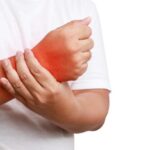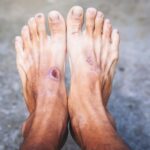Hand, Foot, and Mouth Disease (HFMD) is a common viral illness that primarily affects infants and children under the age of five, although it can occur in older children and adults as well. Caused by various strains of enteroviruses, particularly the Coxsackievirus, HFMD is characterized by a distinctive rash and sores on the hands, feet, and mouth. Recognizing the early signs and symptoms of HFMD is crucial for prompt diagnosis and appropriate management. In this article, we’ll explore the early signs and symptoms of Hand, Foot, and Mouth Disease in children.
1. Fever
One of the earliest signs of HFMD is a mild fever, typically ranging from 100.4°F to 102.2°F (38°C to 39°C). The fever may precede other symptoms of the illness by one to two days and is often accompanied by general malaise and irritability in young children.
2. Sore Throat
Children with HFMD may experience a sore throat or discomfort when swallowing, which can contribute to decreased appetite and irritability. The sore throat is usually mild to moderate in severity and may worsen as the illness progresses.
3. Loss of Appetite
Loss of appetite is common in children with HFMD, particularly due to the presence of painful mouth sores. Children may refuse to eat or drink, leading to dehydration if not adequately managed.
4. Painful Mouth Sores
One of the hallmark symptoms of HFMD is the presence of painful sores or ulcers in the mouth, particularly on the tongue, gums, and inside of the cheeks. These sores may appear as small, red spots that quickly develop into painful blisters or ulcers.
5. Rash
A red or pink rash may develop on the hands, feet, or buttocks of children with HFMD. The rash typically consists of small, raised bumps or blisters that may be tender or itchy. The rash may appear one to two days after the onset of fever and other symptoms.
6. Painful Blisters on Hands and Feet
In addition to the mouth sores, children with HFMD may develop painful blisters or lesions on the palms of their hands, soles of their feet, or between their fingers and toes. These blisters may be tender to the touch and can make walking or using the hands uncomfortable.
7. Irritability and Restlessness
Children with HFMD may exhibit increased irritability, restlessness, or discomfort due to the presence of painful mouth sores and rash. They may be fussy, cry more than usual, or have difficulty sleeping.
8. Fatigue
Fatigue and lethargy are common symptoms of HFMD, particularly during the acute phase of the illness when the body is mounting an immune response to the virus. Children may appear tired or listless and may have decreased energy levels.
9. Headache
Some children with HFMD may experience mild to moderate headaches, particularly if they have a fever. The headache may be accompanied by other symptoms such as fatigue, irritability, or difficulty concentrating.
10. Swollen Lymph Nodes
Swollen lymph nodes, particularly in the neck area, may occur in children with HFMD as the body’s immune system responds to the viral infection. The swollen lymph nodes may feel tender or painful to the touch.
Hand, Foot, and Mouth Disease is a common childhood illness characterized by fever, sore throat, mouth sores, and a distinctive rash on the hands, feet, and buttocks. Recognizing the early signs and symptoms of HFMD is essential for prompt diagnosis and appropriate management. While most cases of HFMD are mild and resolve on their own within a week to ten days, it’s essential to monitor children closely for signs of dehydration or complications. If you suspect your child has HFMD, consult a healthcare professional for guidance on management and symptom relief.










